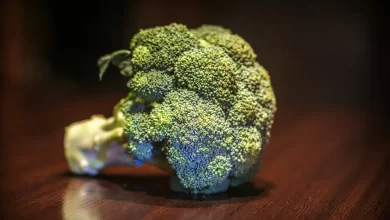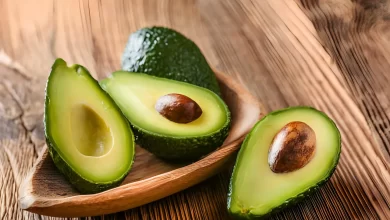Watermelon is a refreshing and juicy fruit that is perfect for hot summer days. It is a large, round fruit with a thick green rind and a sweet, pink or red interior. Watermelons are believed to have originated in southern Africa, but are now grown in many parts of the world, including the United States, India, China, and Brazil. Watermelons are a great source of hydration, as they are made up of over 90% water. They also contain a variety of vitamins and minerals, including vitamin A, vitamin C, and potassium. In addition to being delicious on their own, watermelons can be used in a variety of recipes, such as salads, smoothies, and even grilled.
- Watermelon is a fruit that is a member of the gourd family, which also includes cucumbers, pumpkins, and squash.
- Watermelons are believed to have originated in Africa, where they still grow wild today.
- The first recorded watermelon harvest occurred in Egypt around 5,000 years ago.
- Watermelons were often placed in the tombs of Egyptian kings as a source of water and nourishment in the afterlife.
- Watermelon seeds have been found in ancient tombs in China dating back to the 10th century.
- Early explorers used watermelons as canteens.
- Watermelon is the most-consumed melon in the United States.
- The world’s heaviest watermelon weighed over 350 pounds.
- Seedless watermelons were first developed over 50 years ago.
- Watermelon is an excellent source of hydration, as it is over 90% water.
- Watermelon is also low in calories, with just 46 calories per cup.
- Watermelon is a good source of vitamins A and C, as well as potassium and lycopene.
- Lycopene is a powerful antioxidant that is believed to have anti-inflammatory properties.
- Watermelon has been shown to help reduce muscle soreness after exercise.
- There are over 1,200 varieties of watermelon grown around the world.
- The most popular watermelon varieties in the United States are the Crimson Sweet and the Sugar Baby.
- Watermelons are a warm-season crop that require a long growing season, typically 80 to 90 days.
- The largest watermelon producers in the world are China, Turkey, and Iran.
- Watermelons are commonly used in desserts, such as sorbets and popsicles.
- Watermelons are also used in savory dishes, such as salads and salsas.
- The rind of the watermelon is edible and can be pickled or used in stir-fries.
- Watermelon juice is a popular drink in many countries, including Mexico and Thailand.
- Watermelon seeds are a good source of protein, healthy fats, and minerals.
- In Japan, square watermelons are grown to make them easier to stack and store.
- The world record for the most watermelons chopped in one minute is 48.
- Watermelon festivals are held in many parts of the world, including the United States and Japan.
- In the United States, National Watermelon Day is celebrated on August 3rd.
- In some cultures, watermelon is considered a symbol of good luck.
- Watermelons can be used to make natural dyes for fabrics.
- Watermelons are a good source of inspiration for artists and photographers, with their bright colors and unique patterns.
- Watermelon is the state vegetable of Oklahoma, even though it is a fruit.
- In the United States, watermelons are typically harvested from May through September.
- The sweetest part of a watermelon is the flesh closest to the rind.
- Watermelon seeds were used as a medicine in ancient China to help promote digestion and urination.
- The world’s largest watermelon festival is held in Cordele, Georgia, where over 50,000 visitors attend each year.
- Watermelons are sometimes hollowed out and used as serving bowls for fruit salads or other dishes.
- Watermelon is sometimes used as a natural diuretic, as it can help flush excess fluid from the body.
- The juice from watermelon rind has been used as a natural remedy for acid reflux and other digestive issues.
- The word “watermelon” first appeared in English dictionaries in the 17th century.
- In some cultures, watermelon is believed to have aphrodisiac properties.
- In ancient Greece, watermelons were considered a symbol of fertility and were often depicted in art.
- The yellow spot on the bottom of a watermelon, known as the “sugar spot,” is a sign that the fruit is ripe.
- Watermelon is often used as a natural remedy for sunburn, as it can help soothe the skin.
- Watermelon is a good source of citrulline, an amino acid that can help improve circulation and lower blood pressure.
- The seeds of some watermelon varieties are white, while others are black or brown.
- Some watermelon varieties have yellow or orange flesh instead of red.
- The juice from watermelon is a popular ingredient in many cocktails, including the watermelon martini and the watermelon margarita.
Nutrition Facts of Watermelon
Here are the nutritional profile of 100 grams of watermelon.
- Calories: 30 kcal
- Total Fat: 0.2g
- Saturated fat: 0 g
- Cholesterol: 0 g
- Sodium: 1mg
- Potassium: 112 milligrams
- Total Carbohydrate: 8g
- Dietary fiber: 0.4g
- Sugar: 6g
- Protein: 0.6g
- Vitamin C: 13%
- Iron: 1%
- Vitamin B6: 0%
- Magnesium: 2%





